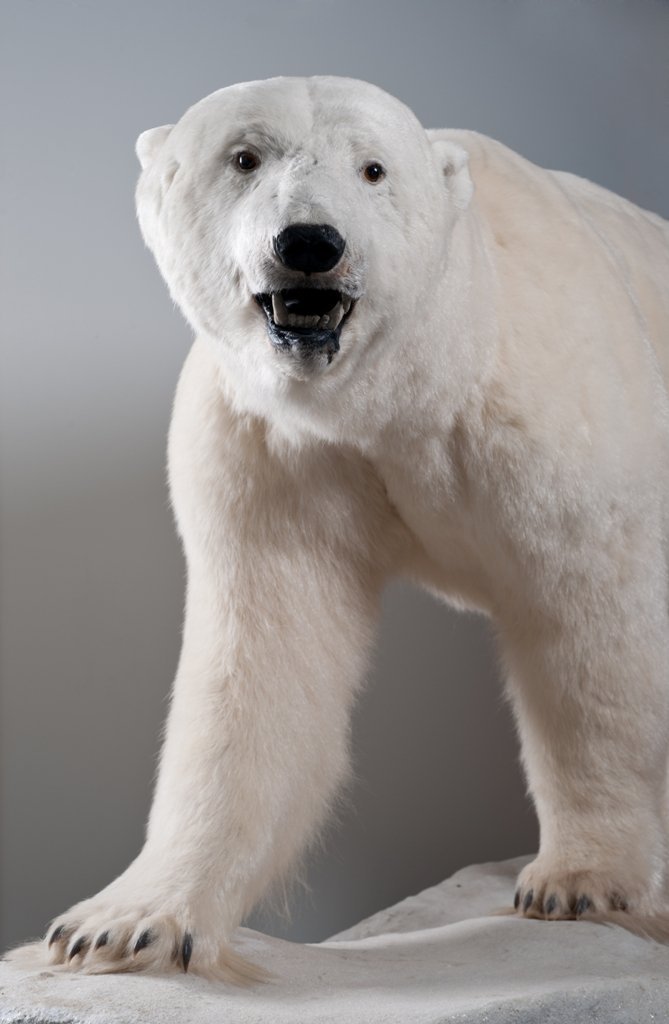Polar bear

POLAR BEAR
Ursus Maritimus
This 12 year old boar (adult male) was killed on Grímsey island, off the north coast of Iceland, in January 1969. He is 2.5 m long and weighed 370 kg (about 815.71 lb). Although polar bears can be larger and heavier, this is the largest bear ever killed and preserved in Iceland. He arrived at the Husavik Museum for future preservation in 1980. Boars typically weigh around 350-700 kg (about 770-1540 lb) while sows (adult female) are about half that size.
Polar bears are believed to be the world’s largest land predators and the largest extant bear species, as well as the largest extant land carnivore, although one other bear species can grow larger. While most polar bears are born on land, they spend most of their time on the sea ice, where they hunt their preferred food—seals—from the edge of the ice. The ringed seal makes up most of their diet. Because of their dependence on the sea ice, polar bears are classified as marine mammals.
Adult polar bears are reclusive and stay at least 100 meters (about 330 ft) away from each other, so conflicts between them are rare. Polar bears are fast runners but tire quickly, and if chased, they try to escape into the ocean, where they can swim for days. Polar bears do not hibernate. Only pregnant sows den, and unlike hibernation, a polar bear’s heart rate and temperate do not decrease. The denned sow does not eat but relies on her fat reserves to sustain herself and her cubs while in the den (similar to hibernation). Boars do not hibernate but occasionally burrow into the snow for shelter during severe weather.
Because of expected habitat loss caused by climate change, the polar bear is classified as a vulnerable species.